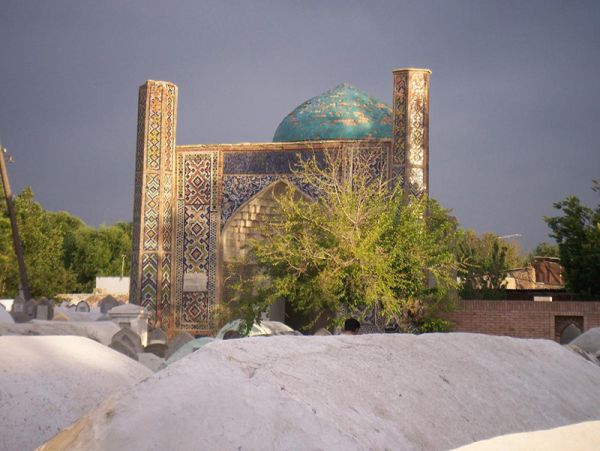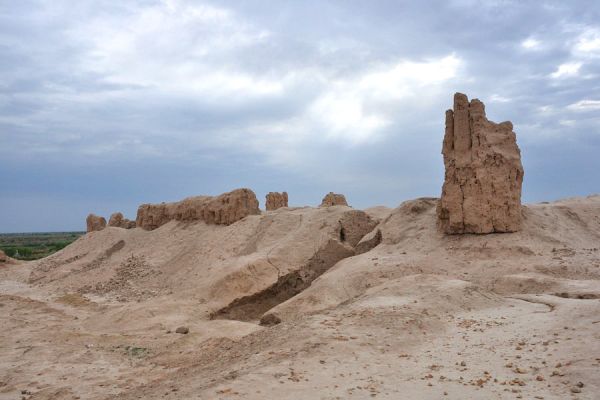Modari Khan Mausoleum
The history of the construction of the mausoleum of Modari Khan is associated with the name of the famous Uzbek poet Nadira. The wife and mother of the Kokand khans, she continued to play a prominent role in court life even after her husband's death. Her poems were included in the golden treasury of Uzbek poetry, and the buildings built at her behest are still the sights of Kokand.
When his mother, the poetess, died a few years after the death of Nadira's husband, the ruler of Kokand Umarkhan, she ordered a mausoleum to be built over her grave, as befitted a pious daughter-in-law who reveres her mother-in-law. And soon Modari Khan became the tomb of all the women of the khan family.
Initially, the tomb of Modari Khan, which means "Mother of Khan", was a khazira, a traditional type of Ferghana memorial architecture. The architectural complex included a domed portal structure, a memorial mosque and a fenced courtyard in which the burial was located. However, over the past two centuries, only the magnificent entrance pavilion has been preserved from the wonderful ensemble.
A small portal with a low dome, delicate floral ornaments on majolica framed by the front doors make all the buildings exquisitely elegant and proportional. The pointed niche above the main entrance is filled with a cascade of stalactites made of snow-white gancha. The two faceted towers that complete the facade evoke direct associations with the Samarkand Bibi Khan mosque, as if hinting that both buildings were dedicated to great women. On the right, on one of the hexagonal tiles, the architect left the date of the mausoleum's construction under the glaze – 1241 AH, that is, 1825. According to legend, culol ceramists from Rishtan and local ganch carvers took part in the construction and decoration of the Modari Khan mausoleum. The most remarkable thing about the tomb's decor is the unusual finish of the dome's inner surface. A ribbed spiral made of gancha is applied to it. But the spiral is one of the most archaic elements of the ornament, known since pre–Islamic times.
It so happened that Modari Khan became the tomb of Nadira herself. In the forties of the 19th century, there was an endless struggle between the Kokand khans and Bukhara for possession of fertile valleys and oases. In 1842, Kokand fell to the enemy. The townspeople and peasants could not accept the loss of freedom and independence. Their moods were also warmed up by the poems of Nadira, who wrote:











